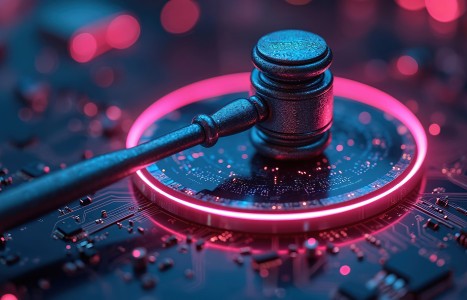On Oct. 21, 2025, a judge in Florida issued a groundbreaking decision in Complete Care v State Farm, 25-CA-1063. It concerns a fact pattern that many chiropractic doctors have faced wherein an insurer, such as State Farm or Allstate, decides to simply stop paying all claims submitted by a healthcare provider.
| Digital ExclusiveEmerging Technologies for Pain Management and Rehab
- Layering emerging technologies in a “shotgun” application is providing outstanding results in pain management and rehabilitation.
- Three novel therapies that show promising effects together are shockwave, laser and Transfer of Energy Capacitive and Resistive (TECAR).
- If you are treating a patient more than once a week in this protocol, be thoughtful in the amount of total energy for each modality you are introducing, as well as the recovery time from the therapy.
Chiropractic’s tradition is specific treatment directed toward the cause of dis-ease or symptoms, a tenant established in 1895. Emerging technologies to accelerate healing and recovery follow the same model: a targeted approach to accelerate healing. However, layering them in a “shotgun” application is providing outstanding results in pain management and rehabilitation.
We have all seen it: You examine patient A, come up with a working diagnosis and set them on a treatment plan, and they respond wonderfully, exactly as expected. Patient B comes in with the same findings and similar demographics, so obviously you set them on the same treatment plan – yet patient B just does not respond.
Why? Same diagnosis. Same pathophysiology. Same treatment, but different result. Perhaps this frustrating scenario is because the treatments have become too reductionistic and the body is just not that simple.
The answer may actually be in layering different therapeutic agents to impact several physiologic processes at once. This goes beyond ice / heat with EMS; we are looking at biohacking cellular processes. The three novel therapies that show promising effects together are shockwave, laser and Transfer of Energy Capacitive and Resistive (TECAR). Let’s look at the physiological effects and application of each as the foundation for layering the three for exceptional outcomes.
Shockwave Therapy
Shockwave therapy is effective for pain control via neurogenic analgesia through the substance P pathway. Briefly, substance P receptors are exhausted by the pressure waves (that is why shockwave hurts), which in turn stops the nociceptive impulses from getting to the spinal cord and CNS. In addition, it has been shown that pressure waves can create selective destruction of free nerve endings as another model of pain control.
At the cellular level, it stimulates the progenitor and differentiated cells and enhances cellular metabolism via mechanotransduction – the transfer of a mechanical force into a biochemical effect. Essentially, the mechanical pressure on the cells leads to an increased expression of cell-specific proteins and cell viability, leading to a restoration of homeostasis.
Clinical Tip: Focused and radial shockwaves are both pressure waves and the body cannot tell the difference. In addition, for any pressure wave to create a metabolic change it must create cavitation within the tissues. The amount of cavitation created is directly related to the effectiveness.
As mentioned above, to create neurogenic analgesia via substance P, shockwave treatments need to hurt. The pain level will generally be 6-8/10. Shockwave treatment times vary from 3-10 minutes depending on the rate of transmission of the pressure wave. Most studies recommend 2,000-5,000 pulses per area of concern and treatments are 1X/wk for 6-8 weeks.
Focused pressure waves penetrate 2-4 inches, whereas radial pressure waves penetrate approx. 2 inches. The effectiveness of shockwave is determined by the amount of energy that enters the tissue. If the pressure waves do not have enough energy to create cavitation at the target site, doing more hits (pulses) or higher pressures will not make a difference.
Laser Therapy
Laser first received FDA approval for the treatment of carpal tunnel syndrome. From a pain perspective, it stimulates nitric oxide (NO) production, as well as mitochondrial activity. The lower frequencies are more superficial (400-530 nm) and even have a bactericidal effect. In the mid-range (600-810 nm), the NO and mitochondrial activity are the highest and in the higher frequencies (915-980 nm), hemoglobin and oxygen saturation increase.
The effects of laser are dependent on the amount of energy absorbed in the tissues, and like shockwave, the energy needs to get to the target tissue. In light therapy, the amount of energy is related to the wattage of the machine over time. For example, 1 watt of energy produces 1 joule in 60 seconds; therefore a 5 watt laser will produce 300 joules of energy in 1 minute compared to a 2.25 light patch that would provide 135J in one minute. So, a light patch would take more time to achieve a therapeutic effect.
However, higher wattage creates heat and the potential for burning. In general, higher-wattage lasers are consistent with class IV lasers and generate heat, whereas the class I-III lasers (cold lasers) have less wattage. Both can be effective to increase NO, mitochondrial function and O2 saturation at the cellular level.
Clinical Tip: As with shockwave, the energy absorbed into the tissue via laser determines the therapeutic effect. Higher-wattage lasers relate to faster treatment times. Lower frequencies are more superficial, whereas higher wavelengths penetrate deeper.
TECAR
TECAR’s effect at the cellular level is multifold. Considered endothermic heat, it simulates blood flow, creating a deep thermal effect; unlike superficial heat therapies, which do not penetrate well into muscles. The radiofrequency current increases cellular permeability and creates vasodilation, leading to relaxation of tissues, increased oxyhemoglobin concentration and increased cellular oxygen levels.
The internal heat produced also releases fascial densifications and tissue adhesions by increasing fluidity of the extracellular matrix, specifically hyaluronic acid.
TECAR has a wide range of frequencies (300kHz to 1.2MHz), enabling the clinician to target the radiofrequency to the superficial, water-dense structures (skin, muscle, tendon) or the deeper, denser tissues (ligament, cartilage). Since the heat created is from an increase in circulation, it is safe over metal implants and surgical staples.
Clinical Tip: Pathological tissue has a dense, thickened extracellular matrix (ECM). It is unknown if the pathology creates the ECM congestion or if the congestion occurs first. Regardless, TECAR can increase ECM fluidity at the target tissue to assist in healing.
Clinical Application: An Example
The clinical application of this primer on emerging technologies is exciting. Start with TECAR: superficial frequency at first for analgesia and gentle warmth (it’s soothing), progressing to deeper frequencies to soften the tissues, release fascial restrictions, and increase circulation and oxyhemoglobin concentration. Total time is approximately 5-10 minutes, controlling the amount of heat produced based on the amount of inflammation in the tissues. This is followed by shockwave.
Shockwave is applied for approximately 50% less than the amount normally provided on the same tissue. Less is needed because the tissue is softened, the relaxation has started and there has been analgesia from the thermal and increased oxygen effects of TECAR. However, it is still desirable to address neurogenic inflammation via the substance P pathway and stimulate cell differentiation through mechanotransduction. Again, about one half of the normal amount of hits would be needed.
Finally, finish with laser to relax the tissues, provide NO and stimulate mitochondrial activity to promote healing and analgesia. If you are using a class IV laser, again about 50% intensity and treatment time since the TECAR has already warmed up the tissues and increased O2 concentration. It is also beneficial to finish with laser since it stimulates the formation of anti-inflammatory cytokines. This effect is the reason laser can decrease the development of delayed-onset muscle soreness in athletes.
Beyond pain management, the layering of TECAR, shockwave and laser is also useful in the rehabilitative stage of care, especially in tendinopathies. The sequence is the same; however, a greater thermal effect from the TECAR and laser can be obtained since the tissues are not acutely inflamed.
In addition, movement and exercise while receiving therapy are excellent in this stage of care. If exercising during therapy is not feasible, then simply add the active care in after the patient’s adjustment and therapy stack.
Clinical Tip: Reducing pain and improving function is the goal of the emerging therapy stack. However, the patient still needs to be adjusted and encouraged to MOVE before they leave the office. Even 5-10 minutes of corrective exercises to repattern faulty movement patterns will help.
This therapy stack can be applied to any style of practice. Chronic and subacute patients can wait a week between treatments to enable the body to begin to heal. Acute patients and in-season athletes can be treated daily.
If you are treating a patient more than once a week in this protocol, be thoughtful in the amount of total energy for each modality you are introducing, as well as the recovery time from the therapy. Perhaps work along the kinetic chain or address the antagonist muscles; or maybe use approx. 25% of the normal energy. Simply be thoughtful. Finally, be sure the patient is drinking enough water and has the macro- and micronutrients to heal.
Obviously this is a brief overview on the use of emerging technologies for pain management and rehabilitation with the intention to broaden the reader’s perspective on using novel therapies in conjunction with each other. The indications, contraindications and application of each are beyond the scope of this article.
Resources
- Császár NBM, Angstman NB, Milz S, et al. Radial shock wave devices generate cavitation. PLoS ONE, 2015;10(10):e0140541.
- De la Corte-Rodríguez H, Román-Belmonte JM, Rodríguez-Damiani BA, et al. Extracorporeal shockwave therapy for the treatment of musculoskeletal pain: a narrative review. Healthcare, 2023;11:2830.
- Hamblin MR. Mechanisms and applications of the anti-inflammatory effects of photobiomodulation. AIMS Biophys, 2017;4(3):337-361.
- Martinelli A, Andreo L, Alves AN, et al. Photobiomodulation modulates the expression of inflammatory cytokines during the compensatory hypertrophy process in skeletal muscle. Lasers Med Sci, 2021 Jun;36(4):791-802.
- Pratt RL. Hyaluronan and the fascial frontier. Int J Mol Sci, 2021;22:6845.
- Pope NJ. Wavelength- and irradiance-dependent changes in intracellular nitric oxide level. J Biomed Optics, Aug 2020;25(8).
- Ribeiro S, Henriques B, Cardoso R. The effectiveness of Tecar therapy in musculoskeletal disorders. Int J Pub Health & Health Sys, 2018;3(5):77-83.
- Szabo DA, Neagu N, Teodorescu S, et al. TECAR therapy associated with high-intensity laser therapy (HILT) and manual therapy in the treatment of muscle disorders: a literature review on the theorized effects supporting their use. J Clin Med, 2022;11:6149.
- Wuerfel T, Schmitz C, Jokinen LLJ. The effects of the exposure of musculoskeletal tissue to extracorporeal shockwaves.Biomed, 2022;10:1084.



